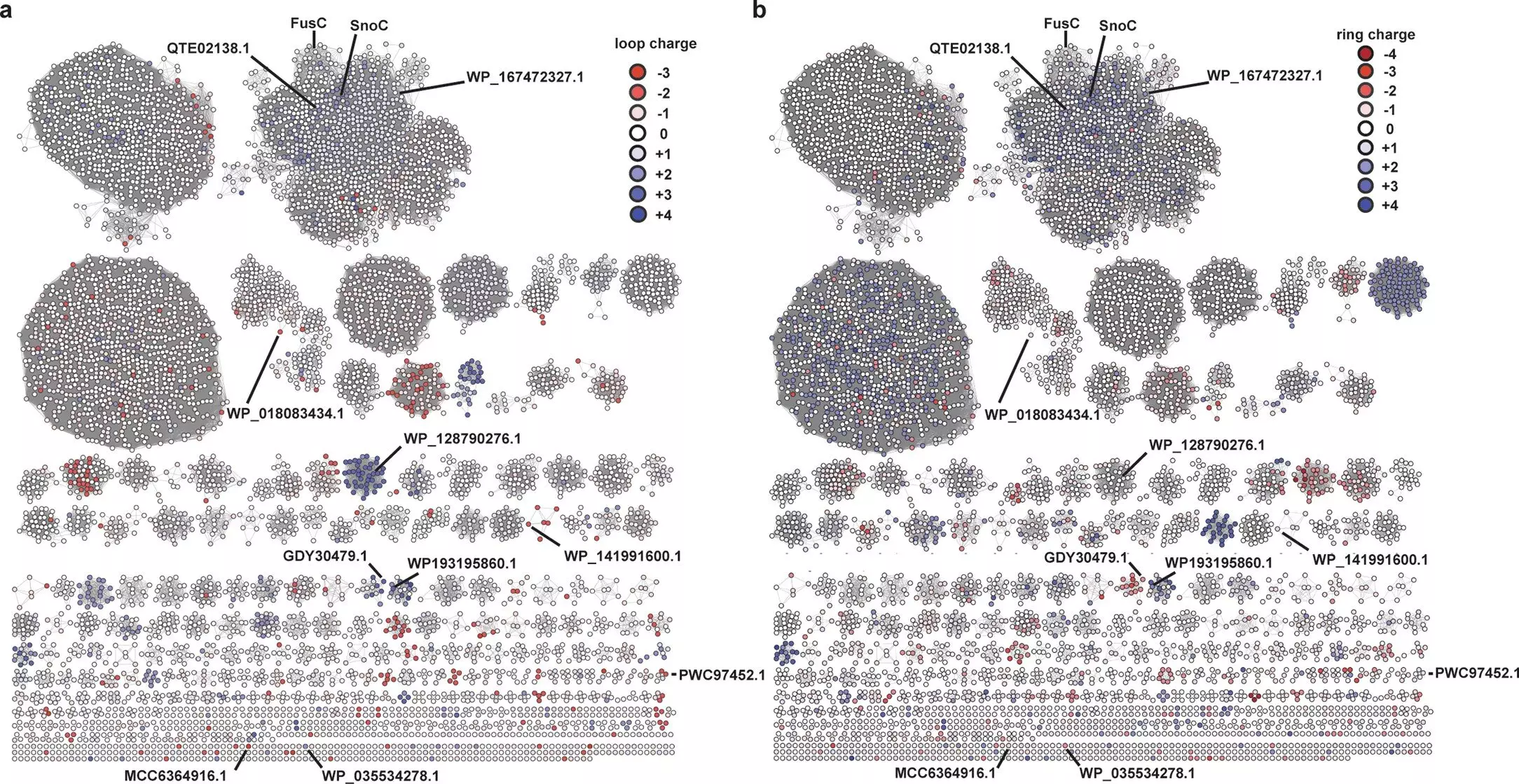Lasso peptides, a unique class of natural products synthesized by bacteria, have captured the interest of scientists due to their extraordinary structural integrity and potential therapeutic applications. Characterized by a distinct slip-knot appearance, these peptides consist of linear chains of amino acids altered into their final form through enzymatic processes. According to Susanna Barrett, a graduate student in the Mitchell lab, their “incredible stability and engineerability” suggest vast therapeutic prospects, encompassing antibacterial, antiviral, and anti-cancer attributes.
Understanding the synthesis of lasso peptides involves delving into the intricacies of ribosomal synthesis and post-translational modifications. The initial formation of peptide chains occurs through the assembly of amino acids by ribosomes. Subsequently, a collaboration between a peptidase and a cyclase is critical for converting these linear precursors into the intricate lasso structure that distinguishes these peptides from others. The quest to unravel the mechanisms behind this cyclization has been challenging, primarily because the enzymes responsible are often difficult to isolate and work with.
Challenges in Cyclase Characterization
Historically, one of the major hurdles in lasso peptide research has been the purification of cyclases, which typically exhibit low solubility and ineffectiveness when extracted for studies. However, a breakthrough came with the fusilassin cyclase, or FusC, which was first characterized in depth by the Mitchell lab in 2019. Despite this advancement, the lack of structural information regarding FusC made it extremely challenging to understand its interaction with peptide substrates during the knot-tying process.
Recent studies have introduced promising new approaches to overcoming these barriers. The utilization of artificial intelligence tools like AlphaFold has ushered in a new era of structural predictions. By inputting data into this advanced AI system, researchers were able to predict the structure of FusC, paving the way for deeper insights into the enzymatic processes responsible for lasso peptide folding. The predictive model created not only enhanced the understanding of FusC but also enabled the identification of critical active site residues necessary for the substrate interaction.
The advent of computational tools has provided unprecedented capabilities for simulating complex biological processes. Employing molecular dynamics simulations through platforms like Folding@home allowed researchers to visualize interactions at an atomic level in real-time. As Song Yin, a graduate student in this field, noted, such simulations had not been previously applied to lasso peptides, making this research particularly groundbreaking.
In their investigations, the researchers identified that specific regions within the cyclase, particularly the backwall of the active site, played a vital role in the folding process. Notably, this was linked to the helix 11 region of FusC. Through an innovative cell-free synthesis approach, they experimented with various enzyme variants, adjusting amino acids in helix 11 to gauge their effect on lasso peptide formation. Remarkably, they discovered variants that successfully folded peptides that had been previously unattainable.
The implications of this research extend well beyond academic curiosity. By affirming a theoretical model for how lasso peptides are constructed, the study opens the door to engineering new cyclases capable of producing a wider variety of these therapeutic molecules. The collaborative efforts with the biotech firm Lassogen exemplify potential applications. By utilizing insights from the research, they successfully engineered a different cyclase, McjC, which effectively produced a potent inhibitor of an integrin tied to cancer progression.
As Mark Burk, CEO of Lassogen, pointed out, the diversity in engineered lasso peptides enhances drug optimization efforts. The innate limitations posed by natural lasso cyclases can now be mitigated with tailored designs, significantly expanding the therapeutic potential of these unique molecules.
The success of this study exemplifies the power of interdisciplinary collaboration, combining expertise from computer science, chemistry, and molecular biology to advance the field of lasso peptide research. Douglas Mitchell, the study’s principal investigator, underscored this by acknowledging the critical role that powerful computational resources, artificial intelligence, and innovative biosynthetic methodologies played in achieving these findings.
As the field moves forward, the groundwork laid by these researchers promises not only to illuminate the complexities of lasso peptide synthesis but also to facilitate the development of innovative therapeutic modalities that harness their remarkable properties. The potential applications in drug development herald a new chapter in biochemical research, showcasing how novel technologies can catalyze scientific progress. This work marks a significant stride in the quest to unlock the vast potential hidden within nature’s own arsenal of molecular therapies.


Leave a Reply